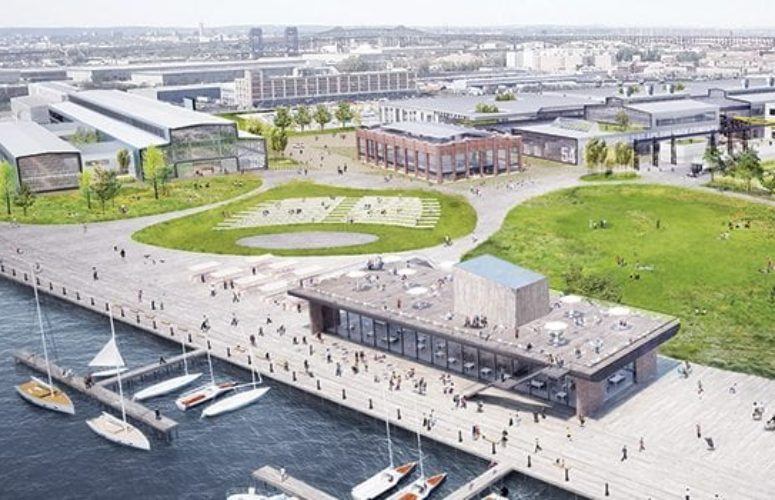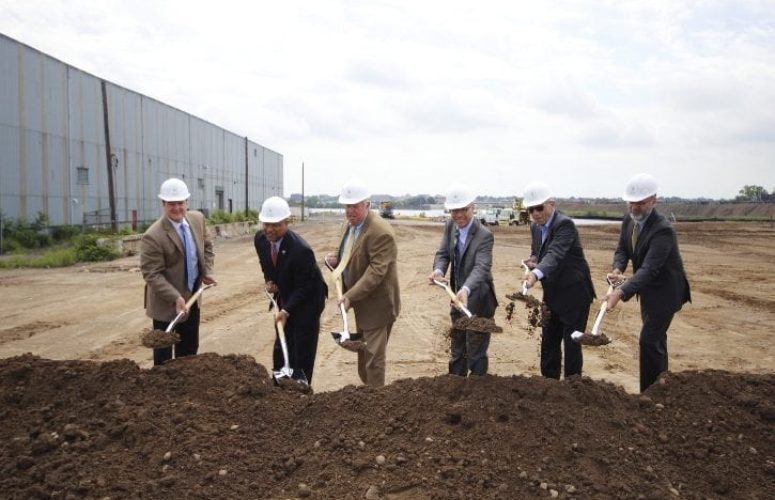
An Ambitious Transformation
Kearny Point project remains true to history.
By Jim Pytell, Assistant Editor On Jul 31, 2017Once among the world’s most prolific shipyards during WWI and WWII, the site of the former Federal Shipbuilding and Dry Dock Company in Kearny is undergoing a 3-million-square-foot redevelopment. The historic shipyard, dubbed Kearny Point, is located less than five miles from Manhattan and is within minutes of the PATH at Journal Square, Newark Penn Station, the Meadowlands and the Frank R. Lautenberg train station in Secaucus.
The vision for Kearny Point? To be more than merely an industrial distribution facility, and, instead, a mixed-use waterfront destination, according to Wendy Neu, chairman and CEO of Hugo Neu, the New York-based development firm behind the redevelopment plan.
“Hugo Neu has a history of thinking big,” she says. “We are long-term thinkers and like to do things that are transformative. We’re looking to do something that is going to make a difference to the region.”
Hugo Neu has owned the 130-acre property since the 1960s and, over the course of the next 10 years, plans to embrace the existing site’s history as well as provide a modern workplace home to a diverse community of pioneering businesses, creating more than 5,000 new jobs.
Building 78, the site’s 160,000-
square-foot flex office space, which opened in 2015, is already home to numerous businesses, boasts a 5,000-square-foot roof deck and lounge, and also has a bistro on its ground floor.
“We currently have more than 150 companies in [Building 78] and our average size tenant space is 500 square feet. We provide all the IT, phones, breakout space and have a significant co-working operation within the building,” says Steve Nislick, CFO, Hugo Neu.
Additional building projects are planned, including the redevelopment of the former craneway, Building 100, into a technologically advanced creative office environment geared towards larger companies. According to Hugo Neu, Building 100 will be complemented by more than 23 acres of new open civic space, including a restored native habitat, a continuous waterfront promenade and a living shoreline.
“We are very sensitive to the history of the site,” Neu says, adding that maintaining Kearny Point’s historical significance is a driver in the ongoing redevelopment efforts. “It may be easier [and cheaper] to tear down the existing buildings and put up new ones, but we really want to honor and respect the legacy [here].”
In addition to honoring the World War-era shipbuilding history of the site, maintaining historical significance means that the cost of all construction on the buildings is eligible for federal rehabilitation tax credits.
“New Jersey has its own creative engine, with a lot of very talented people who are looking for a well-located and creative workspace,” Nislick says. “We’re providing that by giving people a low-cost alternative to start and grow their business.”
Related Articles:






